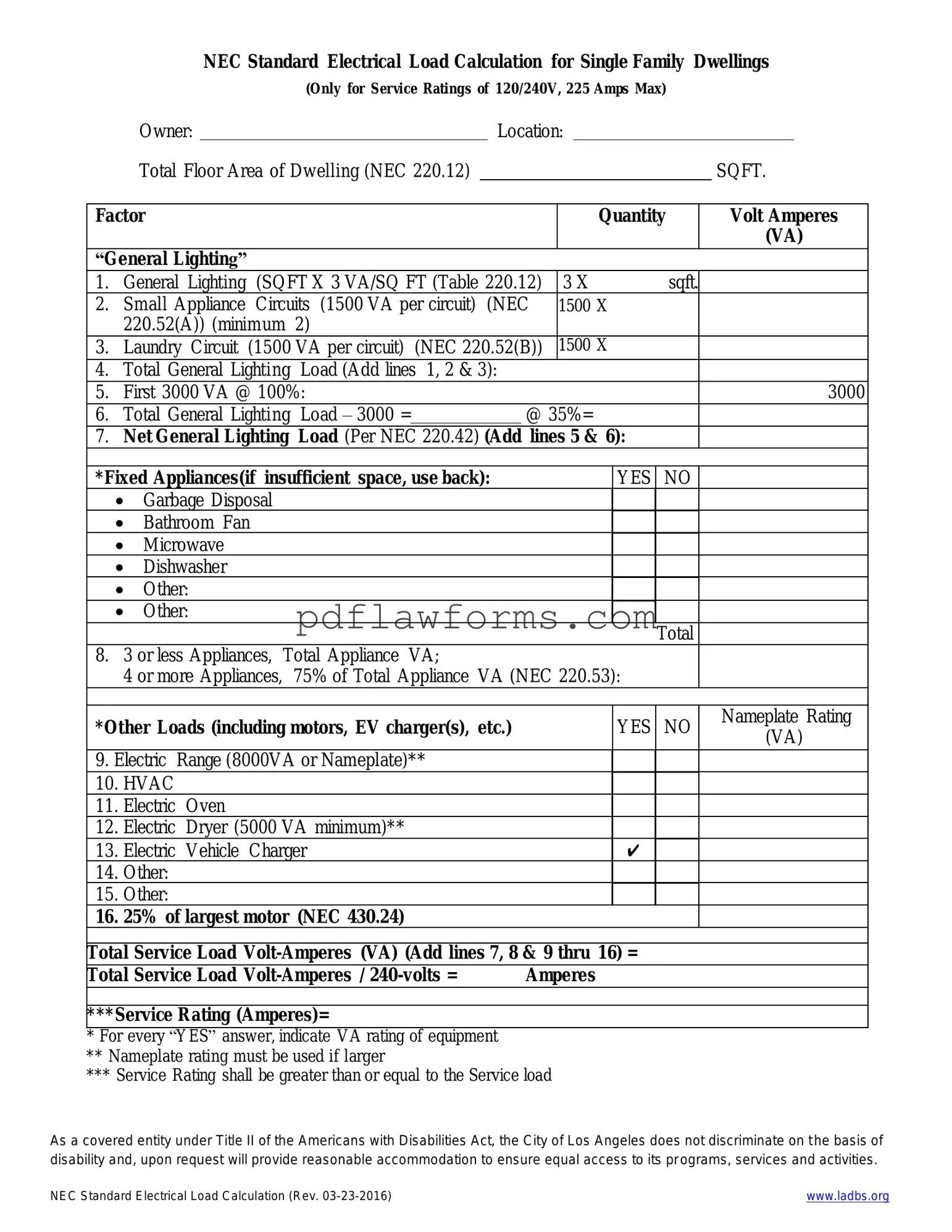Filling out the LADBS NEC Standard Electrical Load Calculation form can be a daunting task. Many people make common mistakes that can lead to delays or even rejections of their applications. One frequent error is failing to provide accurate measurements of the electrical load. It’s essential to calculate the load based on the actual appliances and equipment that will be used. Rounding numbers or estimating can lead to significant discrepancies.
Another mistake is neglecting to include all relevant appliances in the calculations. Some individuals might overlook smaller devices, thinking they won't impact the overall load. However, every appliance counts. Omitting even a few can lead to an underestimation of the total load, which can result in inadequate service and potential safety hazards.
People often forget to check the local codes and regulations when filling out the form. Each jurisdiction may have specific requirements that differ from the standard guidelines. Not adhering to these can cause complications during the approval process. It’s crucial to stay informed about local codes to ensure compliance.
Many applicants also struggle with understanding the distinction between continuous and non-continuous loads. Misclassifying these loads can lead to inaccurate calculations. Continuous loads must be calculated at 125% of their actual load, while non-continuous loads are calculated at 100%. This misunderstanding can significantly alter the total load calculation.
In addition, some people fail to provide detailed descriptions of the electrical equipment. Simply listing the equipment without additional information can lead to confusion. Providing specifics, such as the type and rating of each appliance, helps reviewers understand the context of the load calculation.
Another common error is not verifying the calculations before submission. Double-checking the math can prevent simple mistakes that might otherwise go unnoticed. A small error in addition or multiplication can lead to significant issues down the line.
Furthermore, individuals sometimes neglect to include the required signatures and dates on the form. This oversight can lead to automatic rejection of the application. Always ensure that all necessary fields are completed and that the form is signed and dated before submission.
Lastly, people often underestimate the importance of clarity and organization in their submissions. A cluttered or poorly organized form can confuse reviewers. Clear, legible handwriting or typed entries can make a big difference in how quickly and efficiently the form is processed.
